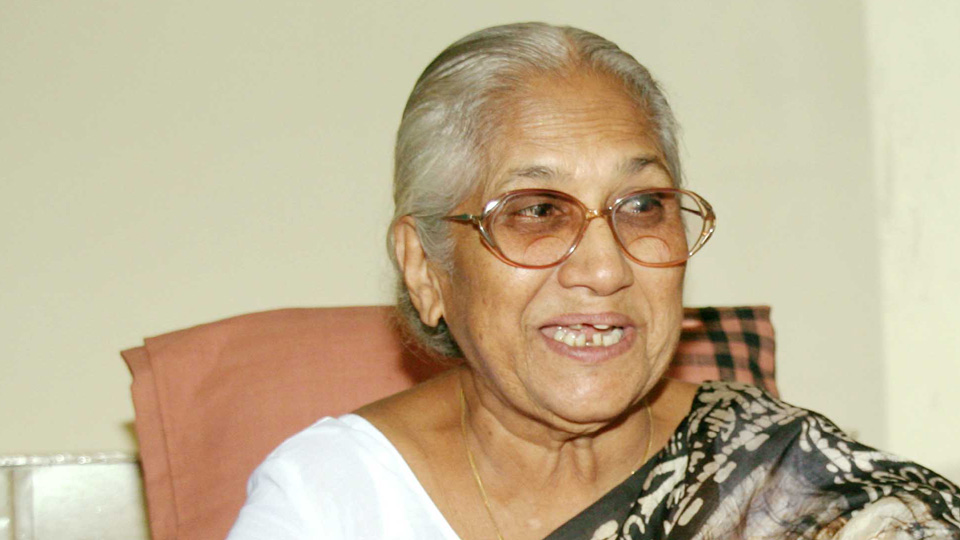Mehrunnisa Dalwai was a noted reformist, social activist and author, in the Muslim reformist movement. Born into a conservative Urdu speaking Marathi Muslim family, she completed her matriculation and then began working at the Khadi and Village Industries Commission (KVIC) in Mumbai. There she met Hamid Dalwai, who was active in social movements. Jobless, Hamid was well known for his condemnation of triple talaq, alimony, polygamy and other issues that riled Muslim society at large. A storm erupted when Mehrunnisa declared that she would get married to Hamid. How could such a fine girl get married to such a useless, loud mouth charlatan, howsoever good? But, Mehrunnisa was the persistent kind. In 1956, Hamid and Mehrunnisa got married first through traditional Muslim rituals and after the lapse of a month, through the Special Marriage Act 1954. Perhaps the first marriage of a Muslim couple to be registered this way.
Hamid, one of modern Maharashtra’s most remarkable and formidable social reformer thinker, was the protagonist of the reformist movement, the Muslim Satyashodhak Mandal (MSSM). It focused on resolving problems faced by the Muslim community and charting its history and socio-cultural transformation. Author of the classic Indhan (published 1965), he took a courageous stand against Brahminicial Hinduism and fanatical Islamism. In Mehrunnisa, he found the ideal soul mate and fellow crusader. While she worked and ran the house, her salary being their only reliable source of income, she yet managed to find time to play a pivotal role in movements of social protest and campaigns run by the organisation, attempting to implement scientific temper to eradicate the orthodox and blind beliefs existing in the Muslim community, where women had always been denied equal rights.
She adhered to the strong socialist beliefs of her husband, who was part of the Rashtra Seva Dal, the youth wing of the Socialist Party and had later associated himself with the eminent socialist, Ram Manohar Lohia. She was at her husband’s side as the family battled threats to their lives while striving to modernise and pare away the backwardness of the minority community. In April 1966, she had spearheaded a march, along with six other Muslim women to Mantralaya in Mumbai seeking abolition of triple talaq. The group of ladies then met Vasantrao Naik, the then Maharashtra chief minister at that time and handed over their memorandum of demands.
Opposition and even death threats soon followed. Even their meetings were constantly interrupted. However, they strived on and the movement gathered support — both physically and emotionally. After the death of her husband, due to progressive kidney failure in 1977, aged 44, she served the Muslim Satyashodhak Samaj, first as executive president and then as president and remained so for several decades. She also later founded the Hamid Dalwai Islamic Research Institute and Maharashtra Talaq Mukti Morcha.
When Rajiv Gandhi overturned the Supreme Court decision in the Shahbano case of 1985, it was the Muslim Satyashodhak Samaj, led by Mehrunnisa that openly opposed it and insisted it be implemented through rallies and agitations. Mehrunissa spoke and wrote chaste Marathi, though educated in Urdu. Her autobiography, Mi Bharoon Paavle Aahe, filled with rich anecdotes of her life with her husband bears testament to that skill and is considered to be an inspirational piece for progressive movement.
Through the pre and post-independence period, Pune has always had a lot of social reformative activities and groups. Very few are still operational but a lot of them fizzled out due to political reasons. They have changed the city; with their consistent and dedicated efforts, and positively influenced Pune. Very little is spoken about Mehrunnisa and Hamid, courageous quiet heroes of reform, let alone making them an important part of Pune’s history. Mehrunissa passed away in Pune aged 87 years, survived by two daughters. As per her wish, her body was donated.


 [/column]
[/column]